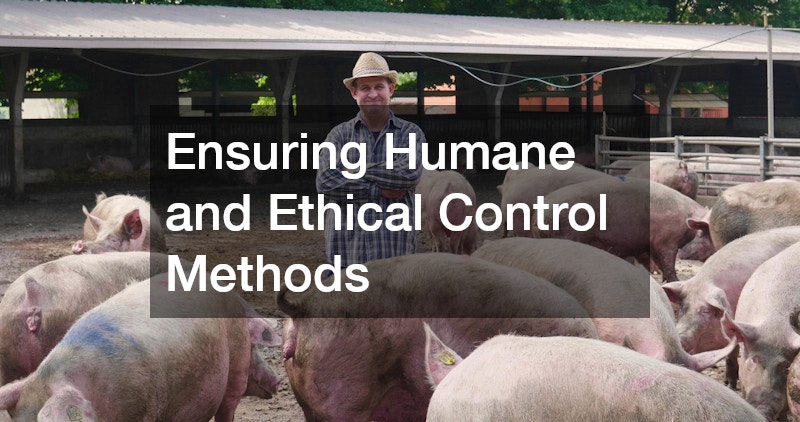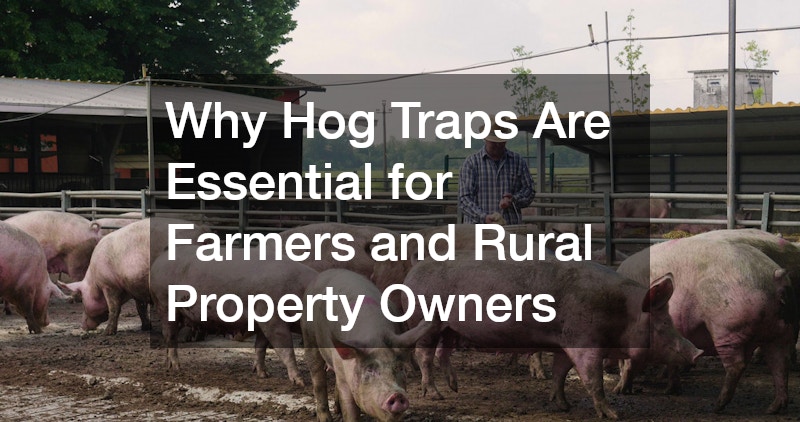The increasing feral hog population is a growing concern for both agricultural lands and rural properties. These invasive animals pose significant challenges, from damaging crops and pastures to impacting the livelihood and safety of farmers and rural communities. As their numbers multiply, it becomes imperative to look into effective and humane control methods such as hog trapping to mitigate their adverse effects.
Crop Damage and Economic Losses
Feral hogs wreak havoc on crops by aggressively rooting and trampling through fields. This behavior often leads to significant reductions in crop yield, directly affecting a farmer’s financial stability.
Moreover, the cost of restoring damaged land adds an additional financial burden on farmers.
A single herd of hogs can obliterate an entire field overnight, resulting in lost revenue that impacts farming operations. These incessant destroyers do not discriminate between high-value crops and regular pasture, further aggravating economic losses. In states like Texas, the annual agricultural damage caused by feral hogs is estimated to be in the tens of millions of dollars.
Threats to Livestock and Wildlife
Feral hogs pose a significant threat to livestock through competition for food and potential aggression. Their presence can lead to direct confrontations with farm animals, sometimes resulting in injury or death. Additionally, hogs can compete for resources, undermining the farm’s overall productivity and stability.
The impact on local wildlife is also profound, as hogs often prey on ground-nesting birds and their eggs. Such predation disrupts the balance of ecosystems and threatens native species. As hogs dig and forage, they inadvertently destroy habitats, leading to dwindling wildlife populations and reduced biodiversity.
Soil and Water Quality Degradation
The intense rooting and wallowing behaviors of feral hogs cause significant soil erosion and water contamination. As hogs dig for food, they disrupt the soil structure, making it prone to erosion and detrimental to agricultural productivity. This degradation leads to further challenges in land management and restoration efforts.
Moreover, wallowing hogs disturb pond and stream banks, increasing sediment runoff into water bodies. This sediment increase can compromise water quality, affecting both human and animal consumption. Contaminated water sources then pose health risks, emphasizing the need for effective hog control strategies to maintain clean water standards.
Types of Hog Traps
The market offers varied hog trap options, including corral traps, box traps, and cage traps, each with unique designs and advantages. Corral traps are large, circular enclosures that can capture entire sounders (groups of hogs) efficiently. Their capacity to contain multiple hogs at once makes them particularly effective for reducing large populations.
Smaller box and cage traps are designed for capturing single hogs and are suitable for targeted trapping efforts. These traps are often more convenient for smaller properties or when resources limit the use of larger traps. Each type of trap can be equipped with sensors and automatic doors to ensure successful capture and humane treatment.
Ensuring Humane and Ethical Control Methods
Hog traps offer a humane and ethical approach to controlling feral hog populations. This method avoids the unnecessary suffering that can result from other control methods, such as hunting or poisoning. Trapping provides an opportunity for humane euthanasia or relocation, aligning with overarching animal welfare standards.
Utilizing traps over other lethal methods minimizes harm to non-target species, preserving local ecosystems. With strategic implementation, traps can be deployed in ways that mitigate risk to unintended wildlife, ensuring a targeted approach to population control. Many modern traps are designed to work remotely and can capture images or alert operators, further improving humane outcomes.
Legal and Ethical Considerations
Before implementing hog trapping, it’s vital to understand and adhere to the legal regulations surrounding trap usage. This includes obtaining necessary permits and ensuring compliance with local wildlife and animal welfare laws. Understanding these regulations is crucial in avoiding legal repercussions and promoting ethical wildlife management.
Ethical considerations involve ensuring that traps are set in a manner that avoids unnecessary suffering for the hogs. Trapping should aim for swift and humane capture, followed by appropriate handling to prevent undue stress. By adhering to ethical guidelines, property owners can contribute to responsible wildlife management.
Cost Considerations and Potential ROI
The cost of implementing hog traps can vary significantly depending on the type and scope of trapping systems used. Initial investments may include the purchase of traps, monitoring equipment, and potential installation costs. Despite these upfront expenses, the long-term savings from reduced property damage and crop losses offer a substantial return on investment.
Hog traps are a crucial component in managing the escalating threat of feral hog populations to farmers and rural property owners. These traps help mitigate the negative impacts of hogs on agriculture, livestock, and the environment, safeguarding both economic and ecological interests. By investing in and effectively implementing trapping systems, landowners can protect their investments and maintain harmony within rural ecosystems.


